Note
what are your thoughts on yuji and where do you think he ends up as a character in/after the current arc? i really wish we get more focus on him and his rs with kenjaku after this fight is over cause yuji has felt very underwhelming ever since mahito left him

I think your frustration at the lack of focus on Yuji is understandable anon, but I think Yuji being out of focus is sort of the point. I've always seen Yuji as a "Decoy Protagonist", because he's what the audience would expect the protagonist to be due to all of his typical shonen protagonist traits. Whereas, the real protagonist of the story is Megumi. In the story itself Kenjaku says something along the same lines, that Yuji eating Sukuna's finger was the initiating event of the story, but he's no longer the center of Kenjakiu's schemes. He's more of a trigger than a driver of the plot.
To me this is part of the appeal of Yuji himself. He's a well-intentioned kid who may be a heart of the friend group he's a part of, but he's never given any special treatment by the story. He doesn't have protagonist privilegeTM so-to-speak.
Usually the main character of the story because they're the central focus are given a lot of leeway to make mistakes. It's their story, the story is focused around their growth and development so it makes sense the world and character sin the story are going to center around them to an extent. They have plot armor because of course they do, there's no story without the main character. If they're losing a fight they'll get a convenient power up in time. If they're cornered one of their allies will show up to save them.

By doing away with a lot of the convenience that happens to a lot of main characters in Shonen manga, Yuji becomes a very atypical main character.
The story does not treat Yuji any different from the rest of its characters. Especially during and after Shibuya where Jujutsu Kaisen shifts to more of an ensemble piece than just following Yuji's story and development into a sorcerer.
Mahito lampshades this very fact in Shibuya. That Yuji up until this point viewed himself as the protagonist of a typical shonen jump exorcism manga. He assumes that things will work out because he's the good guy, here fighting evil curses and good always triumphs over evil or whatever the line is. However, Mahito points out that they're just members of opposite factions fighting in the streets of Shibuya. Mahito wants to usher in an age of curses and Yuji wants to kill curses for the sake of humans. Considering curses don't really follow human morality and rules it's not a good vs. evil conflict, it's ust both of them fighting for which side is going to dominate.

"You came to Shibuya with half-assed determination, didn't ya!? How naive, you stupid brat! This is war! Not a battle to fix what's wrong! But a clash of truths you and your fragile justice! You are me, Yuji Itdaori! I kill without a second thought... just like how you save people without a second thought! The instincts of a curse... against the so called dignity obtained by human reason! It's a battle to determine who will be left standing in 100 years!"
One of the biggest mistakes Yuji makes in Shibuya, letting Sukuna take control of his body leading to the massacre of thousands of people is I think a great example of the way the story treats Yuji differently. There are a lot of protaognists who have demon sides that occasionally go berserk. Often giving them a mid-fight power up when their own skill isn't enough to beat the enemy.
Naruto has the nine-tailed fox. Ichigo has Zangetsu his inner hollow / zanpakuto who occasionally tries to usurp control of his body and fight for him. In both cases however, there usually isn't any real consequences for the protagonist losing control. The worst time Naruto rampaged with the nine tails against Pain the village was already destroyed. When Ichigo loses control in the fight against Ulquiorra, he stabs Uryu but the wound heals and no one holds it against him.
Compare this to Itadori who has the deaths of thousands of people on his conscience because of his inability to control Sukuna and is then made an enemy of Jujutsu Society.


Yuji never benefits from plot conveience, in fact assuming things are going to go his way because the world will follow storybook logic is exactly what leads Yuji to making some major mistakes. There's always hard hitting conesequences to Yuji's actions because he's not special, he's just one character among many who are all fighting to survive in this world.
The one thing that gave him a claim to be the main character, being Sukuna's vessel even gets taken away from him. The whole premise of the story is that Yuji is supposed to consume all twenty of sukuna's fingers and then be executed in order to permanently seal him away.
Only for us to learn that the one thing we thought made Yuji special wasn't unique to Yuji. Megumi also had the potential to be a vessel to Sukuna. Sukuna never planned on staying in Yuji's body from almost the start of the manga he was hatching a long scheme to leave Yuji's body and take Megumi's instead.

The quest given to him by Gojo and Megumi. The thing that only he was capable of doing is gone and Yuji is left with nothing.

So what is Yuji's role in the story then, if he's not a main character? A friend of mine pointed this out recently and it helped me understand a lot about Yuji's character: he's sort of a mirror. The story describes Mahito who's set up as Yuji's foil this way as well.

Yuji is for the most part a normal kid (except for the part where he's a science fair project made by Kenjaku) who doesn't have any strong idea motivating him. Which is why it's very easy for him to adopt the motivations of the people surrounding him instead. He starts out repeating his grandfather's words of helping people. The more he interacts with people, the more his motivations become like theirs as well.

He starts out with the vague goal of helping people. When he is given the role of eating Sukuna's fingers he jumps at the chance because it gives him something that he can only do. Even if he dies at the end of his quest he'll die satisfied and on his own terms because he went out helping people. He realizes how poorly thought out his motivation is when confronting Megumi and starts admiring Megumi instead.
When he fails to stop Junpei's death, which is really failing at his goal to save people from "unnatural deaths" as Junpei is twisted into a horrid form by Mahito, Yuji becomes obsessed with killing Mahito instead. In a way he's reflecting Mahito here because violent mahito with no regards for life at all brings out the killer in Yuji. He almost shifts again away from just helping save people from unnatural deaths to becoming someone strong enough to exterminate Mahito.


Towards the end of shibuya, Yuji finally seems to reflect on the emptiness of his own goal. As someone devoid of a purpose he instead just takes whatever purpose someone else around him offers him. Once again playing his role as a mirror, Yuji himself as a character offers nothing but he is someone who reflects and contrasts the people around him.

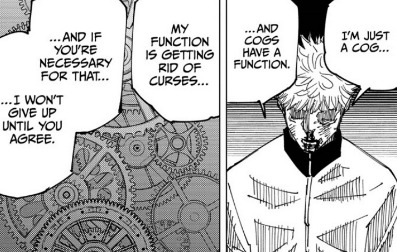
Yuji doesn't need a purpose for himself, but by being a cog he's still a part of the grander scheme of things. Yuji himself says that he's insignificant but honestly I think it's the same symptom of before Yuji wanting to have a place in the world and a task given to him, but not wanting to contemplate what his own motivations are or what he wants. He wants these things to be given to him instead because he's a mirror, he reflects other people he doesn't not reflect upon himself.

Even thinking of himself as a cog fails because the one role he was given to play, to eat the rest of the fingers and die as Sukuna is now given to someone else because he no longer contains Sukuna in his body. I think Yuji's arc will continue however when he chooses to act selfishly for the first time.
By that I mean he can adopt Megumi's philosophy of "choosing to save people selfishly." Yuji is right now the only person interested in actually saving Megumi from Sukuna's possession and finding some way to do so, while everyone else sees him as a target to be defeated. Which is understandable because by utilitarian logic "the needs of the many outweight the needs of the few, or the needs of the one."
The choice to deliberately try to save Megumi and prioritize his life over the lives of thousands of people that might be killed if they don't put down Sukuna permanently and pioritize that is a selfish one.

However, there's already foreshadowing for Yuji making that choice. There's also a circular storytelling sort of logic to it. The story begins by Megumi making the selfish choice to spare Yuji's life even though he's dangerous to others because of Sukuna inside of him. Therefore Yuji making the same choice to save Megumi even though the less risky thing to do is just kill both Megumi and Sukuna together is Megumi's choice from the beginning of the series coming full circle.
It's also an answer to the question Megumi posed to him in their first contronation. "What if the person you save goes on to kill someone else?" Yuji acknowledging that possibility and going on to save Megumi anyway has a lot of weight to it.
The covers of the key animation books released so far also seem to foreshadow the ending fights of the series. We're already in the middle of a Gojo and Megumi confrontation which is the cover of Key Animation Vol. 2.

Considering both Yuji's own nature as a mirror and the way the story itself started with Yuji eating Sukuna's finger I think it makes far more sense for Yuji's last battle to be against Sukuna. Especially since Sukuna now considers Yuji as someone far beneath him even abandoning him as a vessel. The best battle for a character to function as a mirror is to fight their mirror image, and he already did the same with Mahito which was Yuji's most significant fight so far.
As for Kenjaku, we may get some revelations about Yuji's creation but honestly I don't think there's going to be any confrontation between the two of them. There's far more setup for a final confrontation between Kenjaku and Yuta. Number one, Kenjaku is in Yuta's body and that's always been Yuta's rival.

When Kenaku appears and seals Gojo he states he's not worried about Yuta because he doesn't have the potential to surpass Gojo.

Yuta also states his direct goal is to kill Kenjaku by himself so Gojo won't have to kill his best friend a second time.

That's pretty direct foreshadowing in favor of Yuta, and also I think fits with the theme of Yuji not really being the main character of the piece. Kenjaku is pretty much the main villain and the orchestrator behind the plot so him being taken out by another character pushes Yuji away from the center of things. Kenjaku himself even says that he's washed his hands of Yuji, Yuji's no longer the center of his schemes he's moved onto other things.
#jujutsu kaisen#itadori yuuji#I love love love yuuji so much#whenever he acts like a shounen protagonist he's punished instead#you come in expecting a shounen story with a shounen protagonist but you get yuuji instead#he's never the main character even of his own story#kenjaku orchestrated his role as sukuna's vessel and it was implied that even if yuuji didn't willingly swallow sukuna's finger#kenjaku had another plan for him to still become sukuna's vessel#yuuji never had a say in that#and now he's even denied that role because sukuna now takes over megumi's body#megumi has always been the special one#yuuji has never been special#and that's what makes him so appealing#heck even he gets this far in the story with pure strength alone he doesn't have any fancy technique and never really gets major power ups#jujutsu kaisen spoilers
189 notes
·
View notes
Text

#ace attorney#the great ace attorney#dai gyakuten saiban#dgs spoilers#gaa spoilers#tgaa spoilers#dgs 2 spoilers#gaa 2 spoilers#tgaa 2 spoilers
375 notes
·
View notes
Text




19年プ事件合志参本图
#so pretty!!#my favorite case from GAA and one of my favorite cases from the entire ace attorney#the great ace attorney#great ace attorney#dai gyatuken saiban#dgs spoilers#gaa spoilers#tgaa spoilers#dgs 2 spoilers#gaa 2 spoilers#tgaa 2 spoilers
1K notes
·
View notes
Text
The 8 Types of Conflict (with Examples, Possible Resolutions, and Stakes)
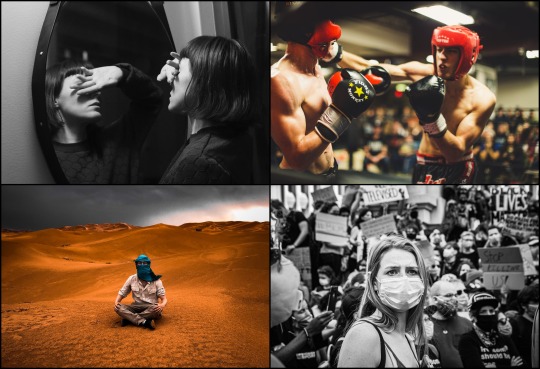
Every story needs a character in a setting engaged in conflict. But sometimes writers get hyper-focused on one or two types of conflict, and never explore or include the other types. This can make a story feel flat or repetitive (similar to what I touched on in my plotlines post). Sometimes the writer senses that there is something wrong, so tries to add more to the story, but they end up either adding more to the same conflict, or simply adding the same type of conflict. Like always, I’m never going to say you can’t ever do this, but just that it’s almost always more satisfying if you put in a variety. Variety gives a story more depth and breadth–and also keeps things interesting.
Conflict is key in moving plot, character arc, and theme forward–in other words, the whole story forward. No conflict = no story. If there is no struggle, the character never grows. If there is no opposing argument, the theme never carries its weight. If there is no antagonistic force, no climax is earned.
Early on in my writing journey, I was only introduced to five types of conflict. And indeed you can find arguments about what does and does not count as a conflict type (and some types can overlap). But today I’ve put together a comprehensive list of the most prevalent categories–and I think just about any conflict will fit within one of them. I’ll also share a few things about each along the way.
1. Person vs. Self
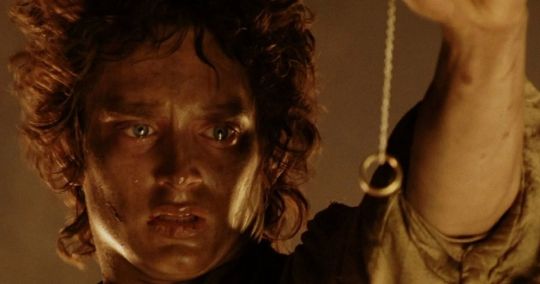
At the most intimate level, we have person vs. self conflicts. In regards to plotlines, you may have heard this called the “inner journey.”
There is usually a flaw, weakness, or misbelief the protagonist and/or another key character has and is struggling to overcome, which helps make up the character’s arc. Often at some point, the character struggles with conflicting belief systems. For example, in A Quiet Place, Part II, Emmett struggles between believing people aren’t worth saving vs. believing people are worth saving. As he comes to believe the latter, he completes his character arc.
Any key character may struggle with doubt, assertiveness, confidence, costs, conflicting wants, or something else. They may be in conflict with themselves about what to do or who to believe. Even characters who don’t arc drastically can have internal conflicts.
And of course, you can have an internal conflict that isn’t fleshed out into a full plotline, but may be an incident. A character may have a brief internal struggle about whether on not to trust someone they’ve just met, and that may only last a scene.
Person vs. self conflicts are great at making a story feel personal and deep. They are often the most empathetic conflicts.
Examples:
Frodo caught between wanting to destroy The Ring, and being tempted to keep The Ring.
Simba struggling between believing he is meant to be king vs. turning his back on being king.
Jean Valjean trying to decide whether he should reveal his identity and save a man from going into prison in his place.
Possible Methods of Resolution:
Having a personal revelation (an epiphany)
Making a personal choice
Taking a personal action
Giving into a personal weakness
Overcoming a personal weakness
Learning new information
Common Stakes (Negative vs. Positive):
Psychological death vs. life, or a better, healthier psychological life
Loss of identity or sense of self vs. clearer sense of identity or a better sense of self
Becoming something undesirable vs. becoming who they want to be
Becoming unfit to do what is necessary vs. gaining the power and wherewithal to complete the task
Coming to terms with a painful reality about one’s self vs. fully accepting one’s self
How one’s changing nature affects others (or the environment) around the character negatively or positively
Having to live with painful regrets vs. having the peace of overcoming
Loss of power (over self, or the internal conflict affecting an outside power) vs. gaining power (self-mastery, or the internal conflicting providing an external power)
2. Person vs. Person

In person vs. person conflicts, the character is (you guessed it) in conflict with another person. This is often what people think of, when they think of “conflict.”
If your antagonist is a person, then your protagonist will be in conflict with him or her. Usually person vs. person conflicts mean that the characters have different goals or at least different methods for obtaining a goal. In Harry Potter, Harry and Voldemort are in conflict because they want opposing outcomes and have different views of the Wizarding World. But sometimes Harry also gets in conflict with Hermione about what methods they should use to reach their goals.
Most often the protagonist and antagonist will be embodying opposing belief systems, so their person vs. person conflict is an example of these two belief systems clashing and trying to claim dominance (which plays into theme).
And usually, the protagonist and their ally (or allies) will clash about what is the best way to move forward in the plot.
These are just rules of thumb, of course, and the person vs. person conflict can also be as brief as a character getting into a heated debate with a stranger on the street. It can come across as obvious as a fistfight or as subtle as a smirk. Many times, the conflict will be expressed through subtext.
In most stories, the protagonist will have many person vs. person conflicts, with different people.
Examples:
Batman fighting The Joker.
Jim and Pam arguing about how to deal with Michael in The Office.
Belle turning down Gaston’s continual pursuits in Beauty and the Beast.
Possible Methods of Resolution:
Defeating the other person physically, intellectually, or emotionally
Agreeing to disagree
Being defeated by the other person physically, intellectually, or emotionally
Coming to a compromise
One character comes to embrace the other character’s perspective, so they are on the same side
Going separate ways
Common Stakes (Negative vs. Positive):
Death (psychological, professional, or physical) vs. life
Physically or emotional pain and injury vs. Physical or emotional health and safety
How the outcome will affect the character’s future lifestyle negatively or positively
Opportunities (gained or lost)
Plot goal lost or achieved
How the outcome will affect loved ones or the world negatively or positively
3. Person vs. Nature

Here, a person is in conflict with nature. This is a struggle that usually comes from the setting. It could be surviving in the wilderness after a plane crash, dealing with disease, an earthquake, starvation, or a bear. Person vs. nature conflicts show characters at the mercy of Mother Nature; this often emphasizes a lack of control. Despite his best efforts, a person may be blindsided by illness or an earthquake. Some disasters can’t be prevented, only coped with. We can try to prepare, or deal with the outcome, but we often can’t simply stop nature.
Unlike most other types of conflict, there (arguably) isn’t really anyone or anything to blame. Nature is indifferent. We can’t really blame the clouds for not raining, or the ocean for the tsunami that wiped out our homes. Even if someone puts us in that situation, ultimately, it’s Mother Nature that deals the blow. Without a clear entity to blame, this sometimes leads people to find someone or something else to blame, to take their hurt out on.
Person vs. nature conflicts can be a great way to illustrate unfairness in the human experience. They also tend to reveal human tendencies, as characters typically find themselves in desperate situations.
Examples:
In Hidalgo, Hopkins and his horse must weather a sandstorm.
In Hatchett by Gary Paulsen, Brian must survive in the wilderness after a plane crash.
In The Martian, Mark Watney must survive on Mars.
Possible Methods of Resolution:
Armed with proper preparation (ex. having no clean water but having brought iodine)
Gaining knowledge (ex. discovering how to cure a disease)
Gaining experience and skill (ex. figuring out how to spear fish for food)
Finding ways to properly cope with the situation (ex. going under a desk during an earthquake)
Help from others, being rescued
Suffering or death
Common Stakes (Negative vs. Positive):
Death vs. life
Physical pain and suffering vs. comfort and safety
How death or suffering of the character will affect other characters, the world, or plot vs. how their physical safety affects those things
How lack of resources or stamina impede progress vs. having resources and stamina improve progress
Loss of valuable time vs. gaining valuable time
Loss of valuable resources (ex. a fire burning down a house or food becoming contaminated) vs. gaining valuable resources (ex. finding shelter or clean drinking water)
Exposing others to illness or danger vs. limited or preventing exposure
4. Person vs. Society
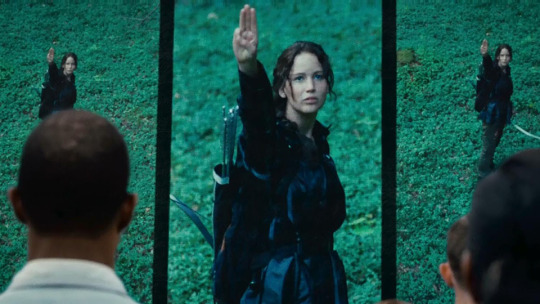
A “society” in a story is any type of collective. It may be as big as a government or as small as a school club. It’s a group of people who work as a unit. The character may be in conflict with a culture, tradition, or an established law. It may be a conflict with a lifestyle or a taboo.
Societal conflicts are less personal than one-on-one conflicts. Often the character is pitted against ideologies that can’t be overcome directly or quickly. For example, in The Hunger Games, Katniss is pitted against Panem’s government–it has laws, traditions, and ideologies that she can’t defeat with sheer force. These things have to be undermined or challenged through smaller actions.
Other times, the collective may work more as a “person”–just multiple people joined together as one. For example, a character may need to overcome a group of bullies who all heckle him together. The fact there are multiple, makes the bullying worse, but doesn’t add much more to the dynamics outside of that.
The character will be different from the collective in a significant way, and the collective will usually try to get the character to bend to their will. Because the opposing force is a collective, it often feels like the odds are stacked against the character.
Worth noting is that it’s not unusual for a particular character to become the “face” of the society. For example, President Snow becomes the face of Panem’s government, even though from the series’ beginning to the series’ end, the true antagonist is the society (one of the reasons I think Mockingjay is often misunderstood 😉).
It’s also possible to develop a society vs. society conflict in a story. It may be the protagonist is part of a collective that is going head-to-head with an opposing collective.
Examples:
Katniss ultimately refusing to be a piece in the Hunger Games
Lyra fighting for truth in a society that wants to keep humankind ignorant in His Dark Materials
Hamilton fighting his way to the top in Hamilton
Possible Methods of Resolution:
Helping the society have a revelation (epiphany)
Destroying, dismantling, or punishing the collective
Convincing society that it is wrong
Persuading the collective to allow the character to pursue her goal
A compromise with the society
Educating society on a better way forward
Being forced into submission or defeated by society
Eventually siding with society
Being exiled from the society or put to death
Being persuaded by society to give up
Common Stakes (Negative vs. Positive):
Death (psychological, professional, or physical) vs. life
Loss of identity and individuality vs. stronger sense of identity and individuality
Affecting society (negatively or positively) by refusing to conform
Society being corrupt vs. being enlightened
Individual being corrupt vs. being enlightened
Believing and perpetuating harmful ideologies and narratives vs. helpful and accurate ones
Imprisonment vs. freedom
Inviting danger to loved ones vs. safety for loved ones
Continua a leggere
568 notes
·
View notes
Text
Debunking 6 Myths about Steadfast, Flat-arc Characters
Steadfast/flat-arc characters are characters who don’t drastically change their worldviews over the course of the story. In contrast, a change character will do largely a 180 flip in worldview from the beginning of the story to the end of the story.
For example, in the fable of the Little Red Hen, the Little Red Hen never changes her worldview about hard work. But in A Christmas Carol, Scrooge completely changes his worldview from the beginning of the story to the end of the story.
In the writing community, there are a lot of misconceptions of the steadfast/flat-arc character (at least from my experience), which I’m going to talk about, debunk, and clarify today in this article. This information will still be useful to writers who have no interest in writing a steadfast protagonist–because nearly every successful story features a key character who is steadfast.

irst, though, we need to visit our familiar pit stop on writing terminology. The most common term for this character is the “flat-arc” character. But it is not the only term. This character has also been called the “steadfast” character, which is what Dramatica Theory calls it. While “flat-arc” is more common, I prefer “steadfast” for a few reasons:
- It conveys that the character must struggle to hold onto something (after all, one is only “steadfast” when there is opposition)
- “Flat-arc” sorta sounds like there isn’t really any growth or movement, which isn’t exactly accurate.
- For much of my experience in the writing world, protagonists who don’t have much of an arc have been frowned upon or treated as “lesser.” The term “flat-arc” reminds me of that.
This is completely preference. You may use whichever term you want. Today, I’ll be switching between the two.
Now, you can have positive and negative steadfast characters. A positive one will hold onto a true worldview throughout the story, while a negative one will hold onto an inaccurate worldview. For the sake of this article, I will be focusing on the positive one, which is more common, and may do a future article that focuses more on the negative version.
Now, let’s talk about some of the misunderstandings and myths about the positive steadfast character.
My (Helpful) Personal History with Steadfast, Flat-arc Characters
Despite wanting to work in the writing industry since I was seven, I entered the writing world like anyone else: naive.
I had an idea for a story I wanted to write, with a protagonist that drew inspiration from some of my all-time favorite protagonists.
What I didn’t know, and what no one could explain to me, was that all these protagonists were steadfast/flat-arc characters. And that’s what I wanted to write.
I took writing classes, went to conferences, read books, and tried to soak up any piece of advice anyone could give me. But for some reason, some of the information didn’t seem to work into my story or apply to the favorite stories I was drawing inspiration from.
This led to a lot of questioning and challenging of “writing rules” on my part (though that was mostly internal). I was told over and over again (if not in these words) that I needed to have a change arc protagonist. It was implied, over and over again, that protagonists who didn’t have change arcs were static, simple, lacking depth and dimension, and were just boring. Of course, there was always the occasional acknowledgment that 007 or Indiana Jones were successful. But I didn’t want to write 007 or Indiana Jones. I still wanted to go deep into character.
Well, over the years, I unwittingly switched my protagonist from a steadfast protagonist to a change protagonist. I’ve only fully realized this recently when reviewing some of those favorite protagonists from years ago.
Not to be dramatic, but I feel a little cheated and let down by the writing world because of that. Even recently I went looking for resources on steadfast/flat-arc protagonists, and frankly, found very little. And of what I did find, 95% pulled from the same source material. I mean, it’s great, but we are obviously lacking with this.
I tell this story, not for therapeutic reasons (okay, let’s be honest, some of it is totally therapeutic!), but because I know there is someone out there who is struggling like I was. Someone who can’t get their story to work because they are trying to apply change-arc advice to a flat-arc protagonist. This doesn’t work. But you can’t see that, because the people you are learning from (who have sincere intentions), don’t fully understand or acknowledge steadfast protagonists.
For example, a writing book that has been making waves (that I looove and definitely recommend) is Story Genius by Lisa Cron. This book is amazing! And so helpful!
If you are writing a positive change protagonist.
It will not help you nail down your steadfast protagonist. Because its principles are founded on the protagonist changing.
So if you are trying to apply it to the wrong type of protagonist, you are going to get frustrated… . or switch your protagonist’s type.
Unfortunately, I myself have been guilty of perpetuating some inaccurate advice, but only because (like most people), I didn’t know better. This also tends to happen because by far the most common protagonist type is the positive change protagonist. There are lots of resources on it. There are lots of people writing it.
But this doesn’t mean that the steadfast protagonist is wrong. It actually doesn’t even mean that he is boring, static, or one-dimensional, nor that he doesn’t grow, struggle, doubt, or change at all. He just doesn’t do a direct flip in worldview. Instead, he proves his worldview true (the thematic statement).
Let’s debunk some myths I’ve heard in the decade or so of being in the writing world.
Myth #1: Flat-arc Characters Don’t Grow

The most common myth you are likely to run into, is that steadfast characters don’t grow. This is inaccurate. The steadfast character doesn’t drastically change her worldview. The positive steadfast protagonist has a worldview that will be proven true by the end of the story, which creates the theme. (In contrast, a negative steadfast protagonist has a worldview that will be proven untrue.)
This doesn’t mean the character doesn’t grow in some way.
For example, you may have a flat-arc character who becomes more competent. Maybe he learns to become a great marksman. Or maybe she learns how to navigate law school (Legally Blonde). A steadfast protagonist can gain any kind of skill, even some that are less obvious, such as learning the art of manipulation. In Moana, Moana must learn how to sail.
You may have a steadfast character who learns to become more proactive/assertive. It’s not exactly unusual for a flat-arc character to not want to get involved in the main conflict in the beginning. He may be a reluctant hero. He may need to learn to not stand by but to stand up for what he believes in, by confronting the antagonist directly. In Disney’s live-action Cinderella, Ella must become more assertive to fully thwart her wicked stepmother.
A steadfast character may grow in experience and wisdom. In Wonder Woman, Diana must experience and understand the real world in order to fully wield her truth against the antagonist.
A steadfast character can grow in pretty much any way that doesn’t totally flip his or her worldview.
Certainly, there are flat-arc characters who don’t grow at all, like 007, and that is fine, and you can write successful characters like that. But that doesn’t mean that none of them grow whatsoever.
Myth #2: Steadfast Characters’ Worldviews Remain Completely Static

Explained most simply, a positive steadfast character has an accurate worldview–understands the true thematic statement–from the beginning. This doesn’t necessarily mean she has a perfect understanding of it.
The character’s worldview may need some refining. It may not be whole or complete. Or, as mentioned, above, it may need more wisdom (discernment) behind it.
These things can only be realized with real-world experience–in other words, the tests and trials of the middle of the story.
While this concept may overlap with the prior, it’s slightly different, as not every way a steadfast character grows will be linked to his or her worldview. They may be two completely separate things. But they can also go hand in hand.
For example, while Cinderella knows kindness will help her through trials (the thematic statement), her worldview needs some refining. She must realize one shouldn’t let others take advantage of that kindness. She needs to stand up and be assertive with her stepmother.
In Arrival, Louise Banks knows that communication can help us understand another perspective, which enables us to avoid confrontation. However, through the story, she gains a greater, deeper, more complete understanding of that, as she learns the heptapods’ language–which has the power to unit humanity and species across time.
In Wonder Woman, Diana knows from the beginning that we should fight for the world that we believe in. However, she gains more wisdom in that regard, after experiencing the gray moral complexities of humanity–does humankind deserve a better world? Only after she comes to terms with this, is she able to embrace the true thematic statement with eyes wide open.
Sure, some steadfast characters have completely static worldviews, but many of them don’t.
This concept can become all the more complex when we consider secondary themes.
First, as a quick recap, the positive steadfast character has an accurate worldview–the “truth,” as some like to call it–this is also the primary thematic statement. This is the truth the story is arguing. The positive steadfast character starts the story with this.
In contrast, a positive change character will start with an inaccurate worldview–the “lie,” as some like to call it–this is basically the “anti-theme”–the opposing argument to the “truth.” The positive change character will change to the “truth,” the accurate worldview, the true thematic statement at the end.
However, many stories have more than one theme. Many stories have secondary themes.
Because of this, it’s possible for the positive steadfast character to be steadfast in the primary theme, but be a change character in the secondary theme.
For example, Diana is steadfast in the primary theme, which is the argument that we should fight for the world we believe in (as opposed to the argument that we should allow humans to suffer the world they “deserve.”)
However, in the secondary theme, she is a change character. The secondary theme is about whether humankind is innately black and white or whether they are innately gray. Diana begins the story believing they are innately black and white (innately good, if not for the antagonist), but learns the truth: humankind is innately gray. This is an arc of disillusionment. This feeds into the primary arc and primary theme.
I have an article on secondary themes in the works, but it’s not complete yet. For now, know this:
Many stories have multiple themes. A steadfast protagonist may or may not be steadfast for every theme (or “worldview” if you prefer). But by definition, they must be steadfast for the primary theme (obviously).
Again, more on that in the future. However, this is why you may see writers argue over whether a particular character has a change or flat arc, and why the same character may get categorized differently–it depends entirely on what thematic thread the person is pulling. One may, in fact, argue Diana is a change character, because she arcs in disillusionment, while another may argue she has a flat arc, because she believes the primary thematic statement from beginning to end.
No worries if it sounds a little confusing. In short, a positive steadfast character’s view may grow or shift in some way, but it never does a 180 flip in the primary arc and theme.
Myth #3: Flat-arc Characters Always Stand Firm
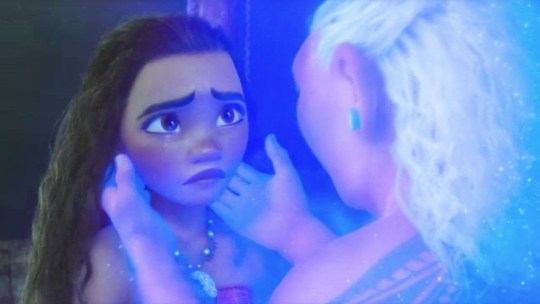
Just because the steadfast character has an accurate worldview and belief system (knows the “truth”), doesn’t mean she never wavers or has doubts about it.
In most flat-arc protagonist stories, the character will have her beliefs tested through the conflicts of the middle. As the antagonistic force gets stronger, the character may experience doubts and powerful temptations (which may include conflicting wants). At some point, it may even seem that her worldview might be wrong. This, along with the cost of adhering to the truth, is almost always the meat of her internal journey. If you want your steadfast character to have a rich inner journey, this is where it’s at.
Continua a leggere
2K notes
·
View notes
Photo
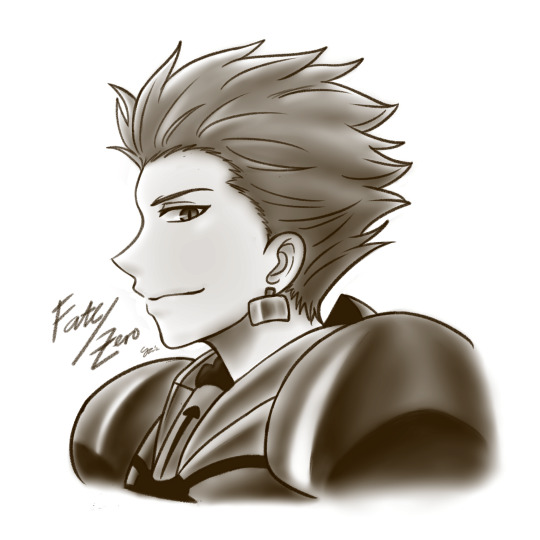
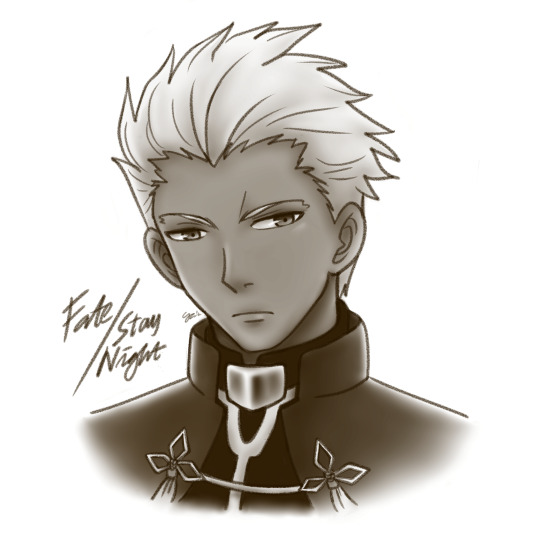
Gil and Archer, some of my faves from Fate/Zero and UBW
#fate zero#fate stay night#fate stay night ubw#gilgamesh#archer#fate series#fate zero was so good it's my fave#shoutout to kiritsugu and kirei for being such intriguing characters#my art
41 notes
·
View notes
Photo

Protagonists
#persona series#persona 1#persona 2#persona 2: innocent sin#persona 2: eternal punishment#persona 3#persona 3 portable#persona 4#persona 5#naoya toudou#tatsuya suou#maya amano#makoto yuuki#kotone shiomi#femc#yuu narukami#ren amamiya#my art
498 notes
·
View notes
Photo
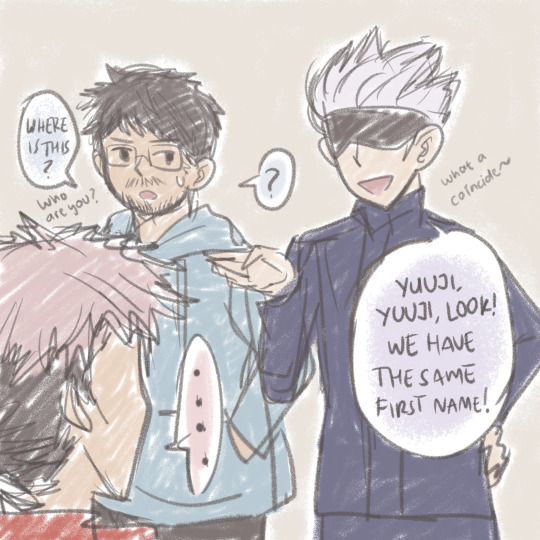
Satoru and Satoru
#my art#king gnu#井口理#satoru iguchi#jujutsu kaisen#gojou satoru#itadori yuuji#technically their names have different kanji but#also I misspelled 'coincidence' but too lazy to correct it sorry
7 notes
·
View notes
Photo
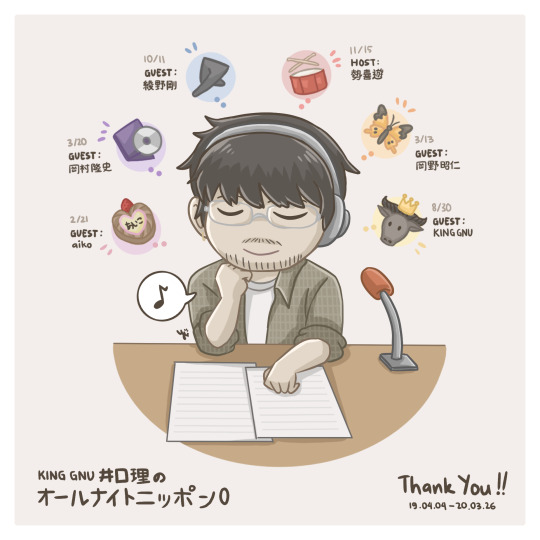
King Gnu井口理のAll Night Nippon 0
6 notes
·
View notes
Photo


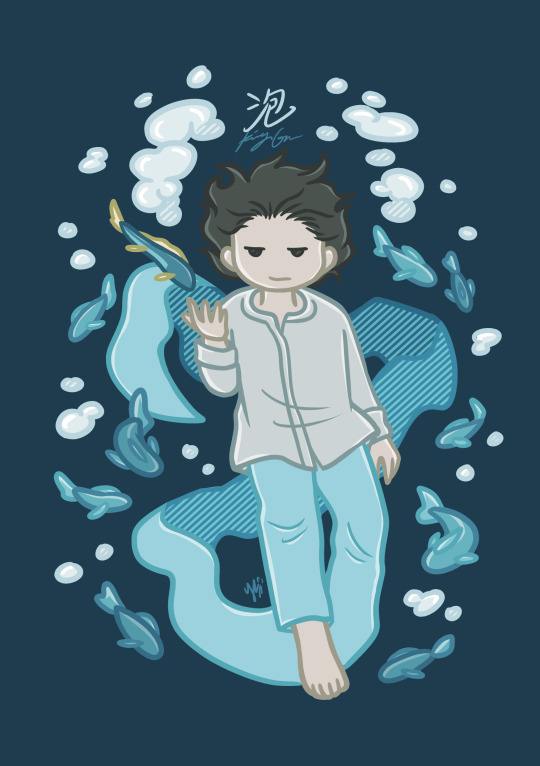
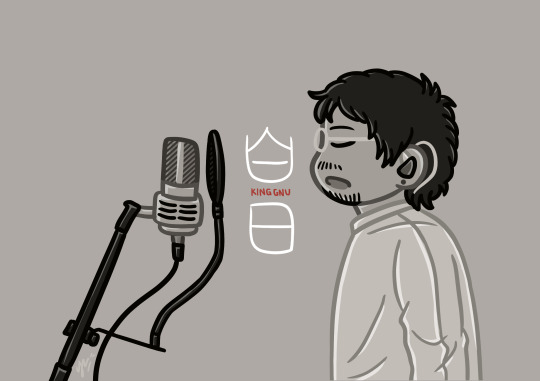




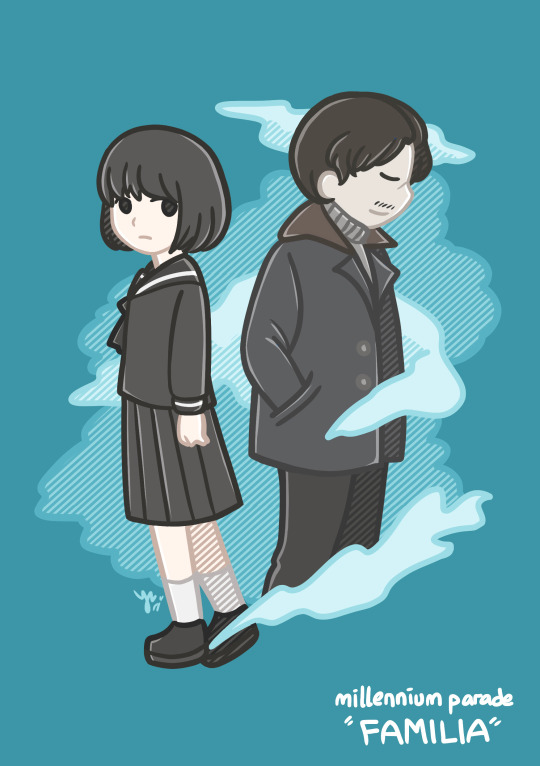
MVs, Part 1
#king gnu#常田大希#井口理#白日#三文小説#千両役者#泡#飛行艇#傘#prayer x#あなたは蜃気楼#familia#millennium parade#mv#my art#daiki tsuneta#satoru iguchi
56 notes
·
View notes
Photo



2020 Birthday art (Sorry Daiki)
2 notes
·
View notes
Photo

Halloween Gnu
12 notes
·
View notes
Photo

Go Louder
#king gnu#daiki tsuneta#satoru iguchi#kazuki arai#yuu seki#常田大希#井口理#新井和輝#勢喜遊#my art#go louder#red bull
5 notes
·
View notes
Photo


King Gnu x Pokemon
#king gnu#daiki tsuneta#satoru iguchi#kazuki arai#yuu seki#常田大希#井口理#新井和輝#勢喜遊#pokemon#pikachu#kanto starters#charmander#squirtle#bulbasaur#my art
5 notes
·
View notes





